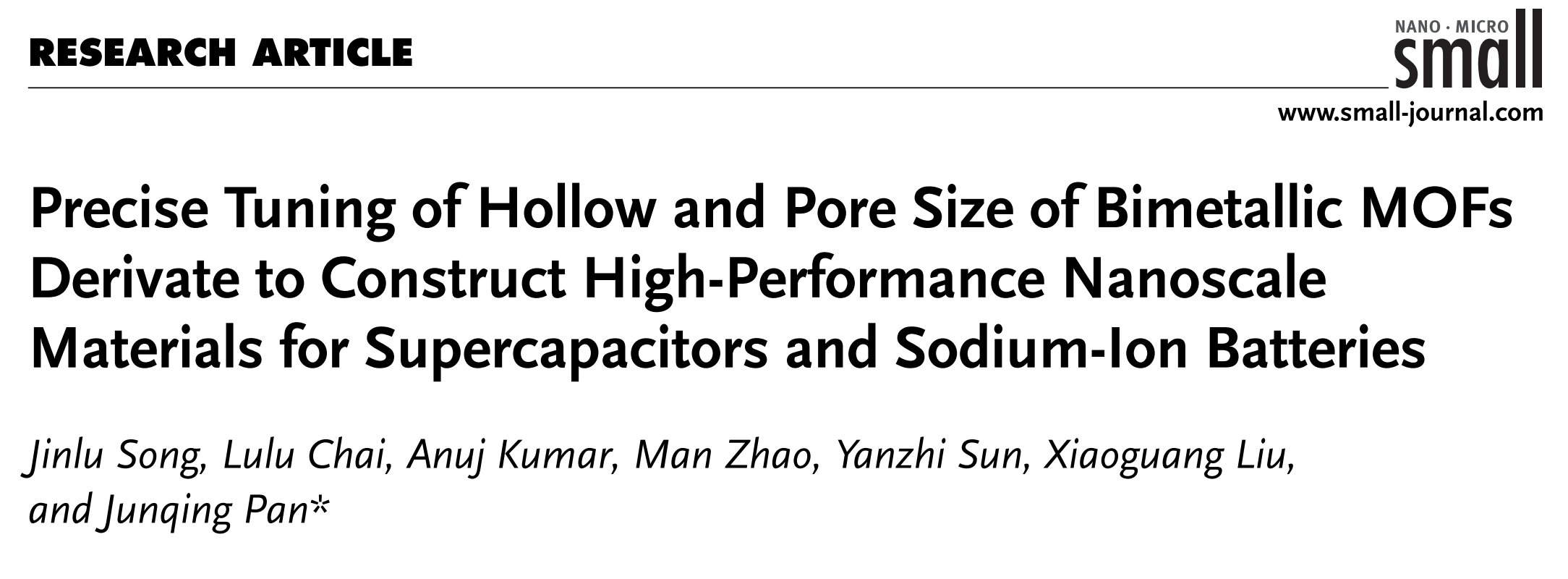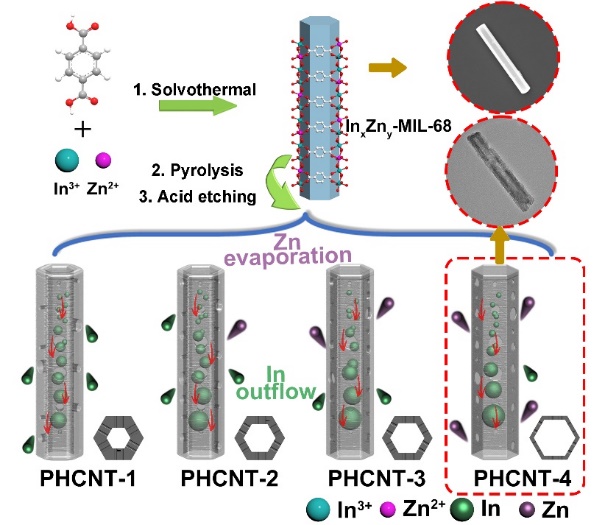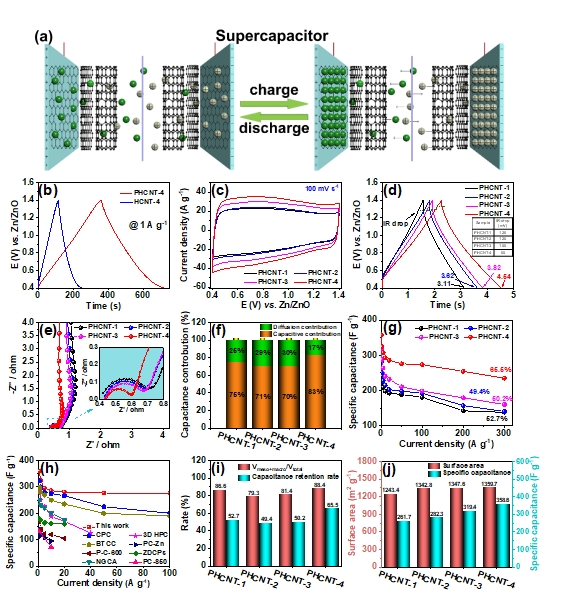Title: Precise Tuning of Hollow and Pore Size of Bimetallic MOFs Derivate to Construct High-Performance Nanoscale Materials for Supercapacitors and Sodium-Ion Batteries

Accelerating the commercialization of electric vehicles and achieving carbon neutrality in transportation relies on cost-effective and high-performance electrochemical energy storage (EES) systems. Sodium-ion batteries (SIBs) show promise for large-scale energy storage due to abundant resources and high safety compared to lithium-ion batteries. Supercapacitors (SCs) complement power batteries with fast charging, high power density, and durability. Both SIBs and SCs rely on high-performance carbon materials, and exploring new universal carbon electrode materials is crucial for meeting EES requirements.
Metal-organic frameworks (MOFs), emerging porous solids, have made breakthroughs in deriving porous carbon materials with high specific capacitance and cycle stability. The pyrolysis of MOF materials facilitates the formation of diverse pore structures, enhancing ion and electron transport efficiency. Designing MOF materials for hierarchical porous hollow carbon materials (PHCMs) with adjustable pore size and tube diameter is crucial for achieving high-performance SCs and SIBs.

Scheme 1 Schematic representation of the synthesis of the MOF-derived PHCNT-4.
Herein, Prof. Junqing Pan group proposed the new tunable porous hollow carbon nanotubes (PHCNT-x) with high specific capacitance formed by regulating the pyrolysis process of indium-zinc bimetallic MOF (InxZny-MIL-68) hexagonal prism materials (Small, 2023, 2306272). The prepared PHCNT-4 has a large SSA (2756 m2 g-1) and high electrical conductivity and exhibits excellent performance in both SCs and SIBs. In a three-electrode system, PHCNT-4 exhibits a high specific capacitance of 358.6 F g-1 and remains 65.5% of initial capacitance at the ultra-high current density of 300A g-1, demonstrating excellent rate performance. It also displays a superb cycle life with 98.3% capacity retention after 100,000 cycles. Furthermore, the assembled aqueous and organic symmetrical supercapacitors exhibit the highest energy densities of 15.56 Wh kg-1 and 20.81 Wh kg-1, respectively. Regarding the Na+ storage behavior, PHCNT-4 shows a high specific capacity (318.6 mAh g-1@0.1 A g-1), excellent rate performance, and long-term cycle performance (capacity retention rate of 88.5% after 1,000 cycles at 1A g-1), accounting for 260-484% times those of CNT. DFT and the related energy barrier calculation indicate the lower ion migration barrier, resulting in enhanced Na+ migration through mesopores in PHCNT-4. This work provides a new strategy for designing hollow structural carbon with large capacitance and Na+ storage capability to meet the requirement of SCs and SIBs in the energy field.

Figure 1. Electrochemical performance of PHCNT-4 in SCs.

Figure 2. Electrochemical performance of PHCNT-4 in SIBs.
